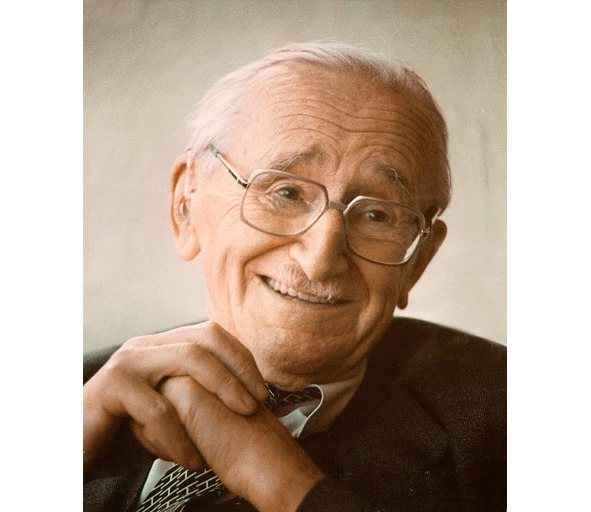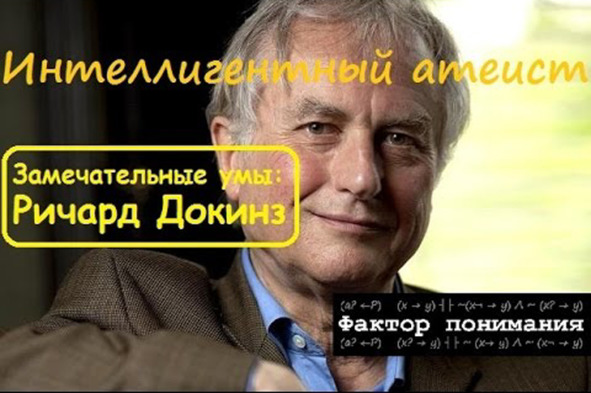
Полная версия
Mechanisms of cultural evolution
Consequently, in order to overcome (restrain the innate instinct) of aggression, it is required to create in the brain some moral prohibitions that block this instinct. It is necessary to change the mentality of a person by changing the functional state of individual brain nodes in the process of education. Religions have served this purpose.
Therefore, in the religious information about the «correct faith», in addition to information about the structure of the universe, there was also information of a certain moral ethical nature. The examples showed how to behave in a society of their own kind and described the punishments that, in the event of violation of these moral standards, will be imposed on the guilty person after his death on this Earth. Life was supposed to be eternal, and the soul was immortal, so punishment is a serious punishment. Among these moral prohibitions was, as a rule, the principle of «Thou shalt not kill.» Religion has turned out to be an important institution of influencing the mentality of people in the sense of restraining aggression towards their own kind.
The introduction by the primitive religion of some moral norms and rules of human behavior in various situations, the creation of some general rules of prohibition, was very important for life in a social society.
Without these rules, as experience shows, the relationship turned out to be prohibitively cruel, and there could be no talk of any cooperation.
God or gods are present in all religions, but they are not the essence of religions. They should be viewed as a way of bringing religious knowledge from somewhere above, from a cult figure, so that believers do not even have a thought to challenge or modernize them. The fact is that the process of replicating information in the brain is not nearly as accurate as the process of DNA replication. Here, to make it more accurate, we need inaccessible gods in religions. They have no other functions. To confirm this thought, you can recall the game «Broken Phone», where after several replications, the information changes beyond recognition.
By introducing into the consciousness of religious rules of behavior that limited aggression, providing for punishment for violations of prescriptions, apparently, it was possible to curb this genetic adaptation to a significant extent (Aggression to a stranger). Note, not to destroy, but to curb, because we cannot rebuild the genome. And genes create innate instincts as a result of a cascade of sequential biochemical reactions that affect the nervous system and brain. There are no patterns of behavior directly in the genes; only the rules for constructing proteins from the 20 available amino acids are fixed in them.
Aggression is still bubbling inside us today, and the way out for it is blocked to one degree or another by moral prohibitions in the brain. It is costly to contain these emotions in terms of physical health. You have to pay for everything. But the payoff is greater. At this stage of the transition of the population from the existence of tribal tribes to the existence in the form of large agglomerations, where the individual’s aggression must be somehow curbed, religion has played, apparently, a significant role.

The same position on the unification of people (socialization) is held by the philosopher and economist of the liberal trend, Nobel laureate Friedrich Hayek in his work «Pernicious arrogance».
Quote.
«Often these rules (morality) forbade the individual to perform actions dictated by instinct. Forming actually new and different from the previous morality, they restrain and suppress «natural morality», that is, those instincts that rallied the small group and ensured cooperation within it, blocking and making it difficult to expand.
However, the decisive factor in the transformation of an animal into a human was precisely the curbing of innate reactions caused by the development of culture.
The norms and habits learned in infancy become as much a part of our personality as that which was already guiding our behavior when the assimilation was just beginning.»
5. Replicators of culture
Human cultural evolution is an observable fact. It must have mandatory attributes like any evolution of living things. Therefore, it is required to indicate its replicators and inheritance mechanisms, since the corresponding attributes of biological evolution (genes) cannot explain the fact of cultural evolution.
Sociobiology studies the phenomenon of human cultural evolution from a natural scientific standpoint. It can be presented as an attempt to penetrate the scientific approach into the area where the humanities now dominate. The humanities do not need to justify the very existence of cultural evolution, they just need to postulate it. But science seeks to reduce the number of postulates to a minimum. If you postulate something, then there is no need to prove it and explain it. Naturally, sociobiology encounters powerful resistance from the humanities and those who have joined them, since it deprives them of their daily bread (and not only).
Sociology, important for practice, developed exclusively on an empirical basis, must follow from sociobiology, as chemistry does from physics. As far as history, biographical and fiction books are concerned, they should be viewed as research protocols for sociology.
Replicators by R. Dawkins
The idea of replicators of culture was expressed by R. Dawkins. Clinton Richard Dawkins (March 26, 1941) – English ethologist, evolutionary biologist, scientist and popularizer of science

Dawkins has become widely known since 1976, when his book «The Selfish Gene» was published, in which the term «meme» was introduced into the lexicon, denoting a unit of cultural information that is copied and transmitted from one carrier to another and is subject to mutations, natural selection and artificial selection.
Dawkins writes: «All living things evolve as a result of the differential survival of replicating units. It so happened that the gene – a DNA molecule – turned out to be the dominant replicating unit on our planet.
It seems to me that a new type of replicator has recently appeared on our planet. It is still in childhood, still floundering awkwardly in its primordial soup, but evolving at such a rate that it leaves the good old gene far behind.
The new broth is the broth of human culture. We need a name for the new replicator, a noun that would reflect the idea of a unit of cultural heritage transmission or a unit of imitation. A suitable Greek root gives the word mimem, but I want the word to be monosyllabic, like gene. I hope my classically trained friends will forgive me if I shorten mimem to meme.
In Dawkins’ replicator-idea, propagated by imitation. There is a lot of unsaid in this definition. Let’s assume that Dawkins only set the task of finding a certain entity that would satisfy the set task – to be a replicator in cultural evolution.
If it was possible to find a cultural replicator and mechanisms for its transmission in generations, then it would be possible to build a theory about human behavior in societies, reminiscent of population genetics.
This task belongs to the section of cultural microevolution. It will not be possible to solve it as G. Mendel did, formulating the three laws of heredity. The human brain is much more complex than peas, on which the laws of heredity were first discovered.
We know how information is transmitted over radio channels. But we do not understand enough how it is transmitted between people. Information from one brain to another is transmitted by a certain code (words, pictures, tactile sensations, etc.). Understanding this code by the receiving party allows it to recover the transmitted information to a certain extent. Information is not copied directly from one head to another, but is reproduced by the recipient again in accordance with the code. This algorithm is used to compress transmission channels in digital methods of transmitting information – music, video.
In one head, MEM (information) exists in the form of functional states of a certain group of neurons, and the perceived information through the sense organs in another head is recreated in the form of another MEM, is realized through the functional states of another group of neurons.
How identical the initial MEM will be in the second head depends on the state of the surrounding neurons. When we read a verse, everyone perceives it differently. He will excite one, recalling something from the experience, the other will leave indifferent. But the information sent to the head is the same.
Understood in this way, MEMS can still be considered replicators, albeit imprecise. But what determines the quality, completeness and speed of information transfer can only be guessed at, since we have only fragmentary data characterizing the work of the brain.
Long before R. Dawkins, back in 1898, V. M. Bekhterev in his article «The Role of Suggestion in Public Life» wrote about «mental microbes», which, «like real physical microbes, act everywhere and everywhere and are transmitted through the words and gestures of those around him., through books, newspapers, etc.»
Transmitted to others, «mental germs» can change some aspects of their behavior.
New MEM replicators
To build a theory of cultural evolution, we need a more elaborate model of the replicator, reflecting its properties and manifestations, with some predictive power.
The behavior of the entire multicellular organism is regulated by the supercellular control system, a system created on the basis of the nervous system, brain and sensory organs. This is the highest (outer) circuit of the subordinate control system.
It cannot be imagined that he acts independently and according to a permanently established algorithm. The adaptive regulation of this external loop depends on the results of the work of the internal control loops, on the state of the external environment.
Individual brain cells (neurons) are connected in neural networks that have many nodes that process and store information. It looks like a multi-core processor, but with an incredibly large number of cores. There are about 80 billion neurons in the brain, which is 4 orders of magnitude more than all genes in the human genome. It is possible that in the brain, some neurons will turn out to be «junk», non-coding, like most of the genes in the genome.
The structures of this network are local associations of neurons – the «words» of the neural code of the MEM. These associations are not physical, but functional. The functional states of neurons are encoded by information received by the brain from the sense organs about the external environment, about the state of the organism itself from its nerve cells. The incoming information is processed by the MEM system, which can be considered as a set of regulators that determine the activity of various brain structures that affect the behavior of the whole organism.
If you feel hungry, cold, irritated, joyful, or any other need of the body, then this appropriately directs thoughts and changes behavior. Regulators that control processes in accordance with the established regulation law are themselves capable of changing (adaptive regulators) by internal needs. This changes the vector of our thinking and behavior. The entire control system resembles the slave control system used in an electric drive, when the external control loop takes into account the state of the internal one. Only in the body, the parameters of the regulators are set not by the developers, but by the totality of the surrounding factors. In other words, regulators are adaptive.
The brain acts in accordance with the many signals that enter it. Most of them come from the environment external to a person, and the other part from the internal environment.
Конец ознакомительного фрагмента.
Текст предоставлен ООО «ЛитРес».
Прочитайте эту книгу целиком, купив полную легальную версию на ЛитРес.
Безопасно оплатить книгу можно банковской картой Visa, MasterCard, Maestro, со счета мобильного телефона, с платежного терминала, в салоне МТС или Связной, через PayPal, WebMoney, Яндекс.Деньги, QIWI Кошелек, бонусными картами или другим удобным Вам способом.

